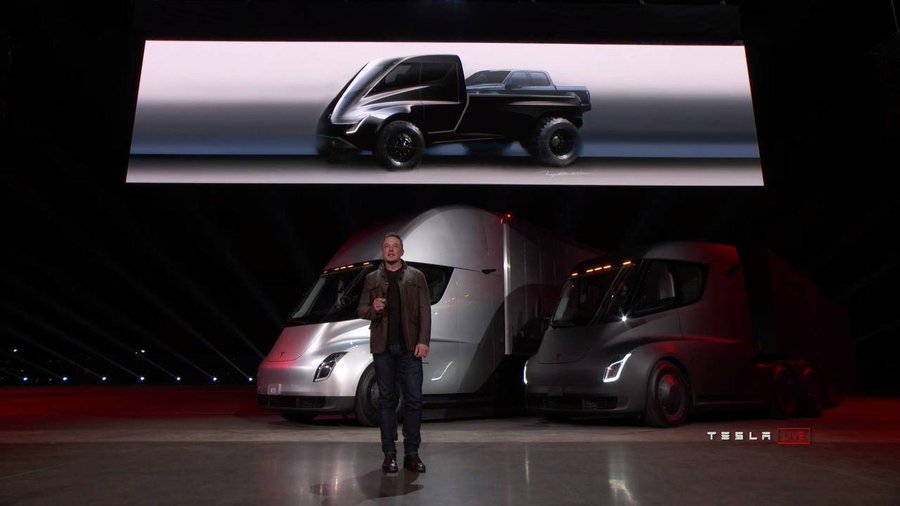It's a bit different than anything else the electric automaker has done so far, but tackling the transport industry is crucial to Musk's "Master Plan," specifically the part about "Expand[ing] to cover the major forms of terrestrial transport." As stated earlier, the Tesla Semi uses electrification and automation technology to reduce costs and increase safety while still being fun to operate.
First, let's go over some of the Tesla Semi's key details:
Range: "500 miles at maximum weight at highway speed"
Battery capacity: not disclosed
Powertrain: 4 electric motors, 2 at each axle behind the cab
Cargo capacity: 80,000 pounds.
Drag coefficient: 0.36
Autonomous capability: Highway Autopilot, platooning capability
Infrastructure: Megachargers to provide 400 miles of range in 30 minutes
Production: Begins 2019
Tesla began the presentation by rolling out two trucks onstage. Its looks are clean and seamless, as one would expect from Tesla. The first thing we noticed was its central driving position, which Musk says helps visibility.
Tesla used the acronym BAMF to describe the performance. Tesla claims 0-60 in 5.0 seconds, even with a trailer. At max gross weight of 80,000 pounds, it does the 0-60 sprint in 20 seconds. It can do 65 miles per hour up a 5 percent grade at that weight, compared to about 45 mph for a diesel rig.
The Tesla semi has a range of about 500 miles on a charge. Musk said 80 percent of all trucking routes are less than 250 miles, meaning the truck can make it to its destination and back on a single charge. Tesla is planning "Megachargers," DC charging stations along common routes and at origin and destination points that can provide 400 miles of range in 30 minutes.
Tesla promises that its truck will save operators money, particularly in fuel and maintenance costs. A diesel truck is 20 percent more expensive per mile, Musk said. Tesla claims "owners can expect to gain $200,000 or more in savings over a million miles based on fuel costs alone." The truck can predict when it needs maintenance, and can inform operators ahead of time, which will help decrease downtime. Regenerative braking recuperates energy and reduces brake wear.
In terms of production, the fact that the Tesla Semi Truck uses the same motors found in the Model 3, and similar battery structure to Tesla's stationary storage units, should help keep manufacturing streamlined and less costly.
Safety-wise, the Tesla Semi features technology that reduces risks for the truck operator and the other people with whom it shares the road. It features independent motors at the wheels to prevent jackknifing. It also features explosion-proof "Tesla Armor Glass." Musk said, "It survives a nuclear explosion, or you get your money back." For practicality, though, it reduces downtime from the average yearly cracked windshield of semis. It also features a number of cameras to provide a view of the truck's surroundings.
The Tesla Semi Truck can be reserved for $5,000. Whether its capabilities and promises of cost savings to operators will translate to sales is yet to be determined.

